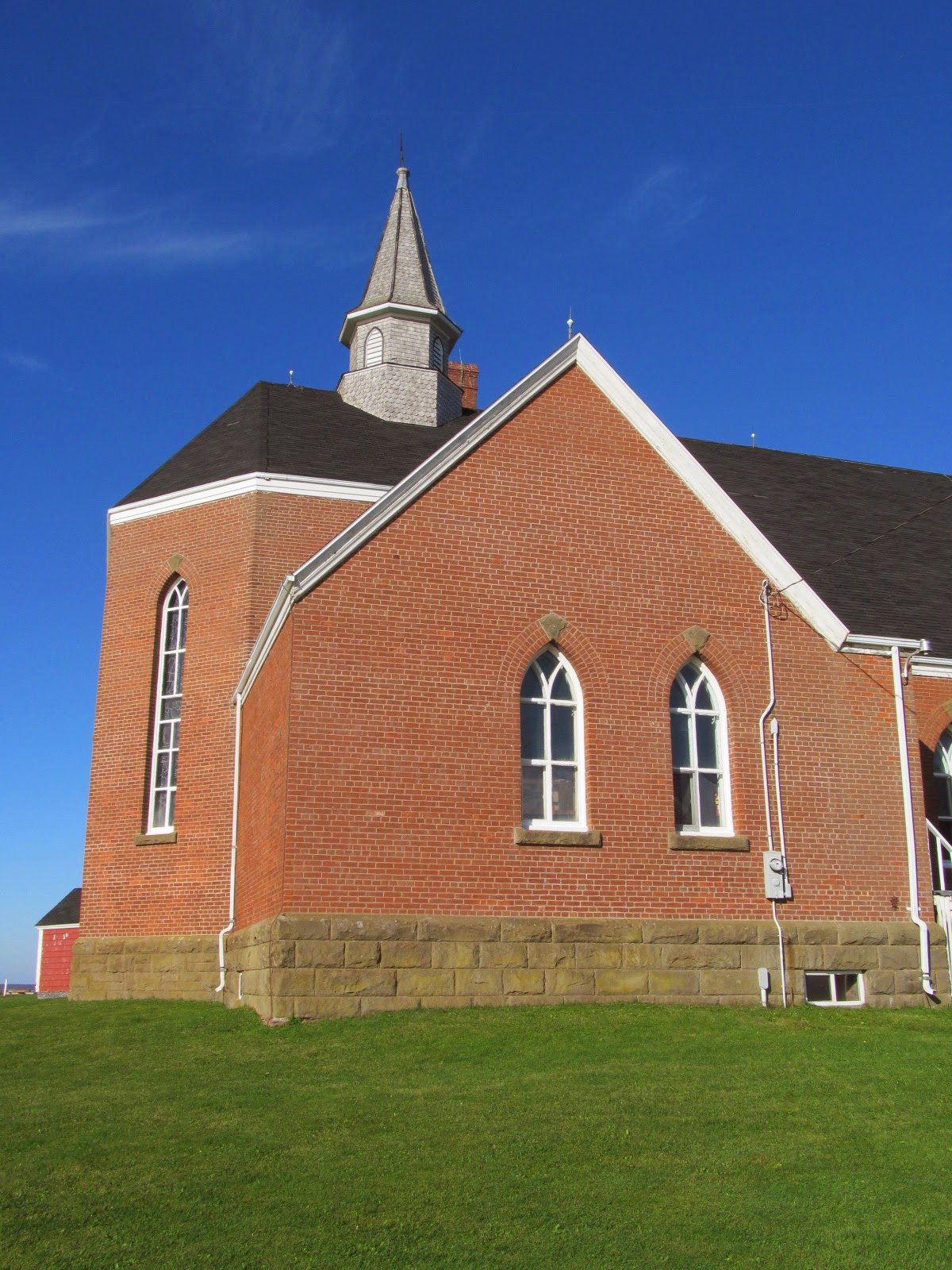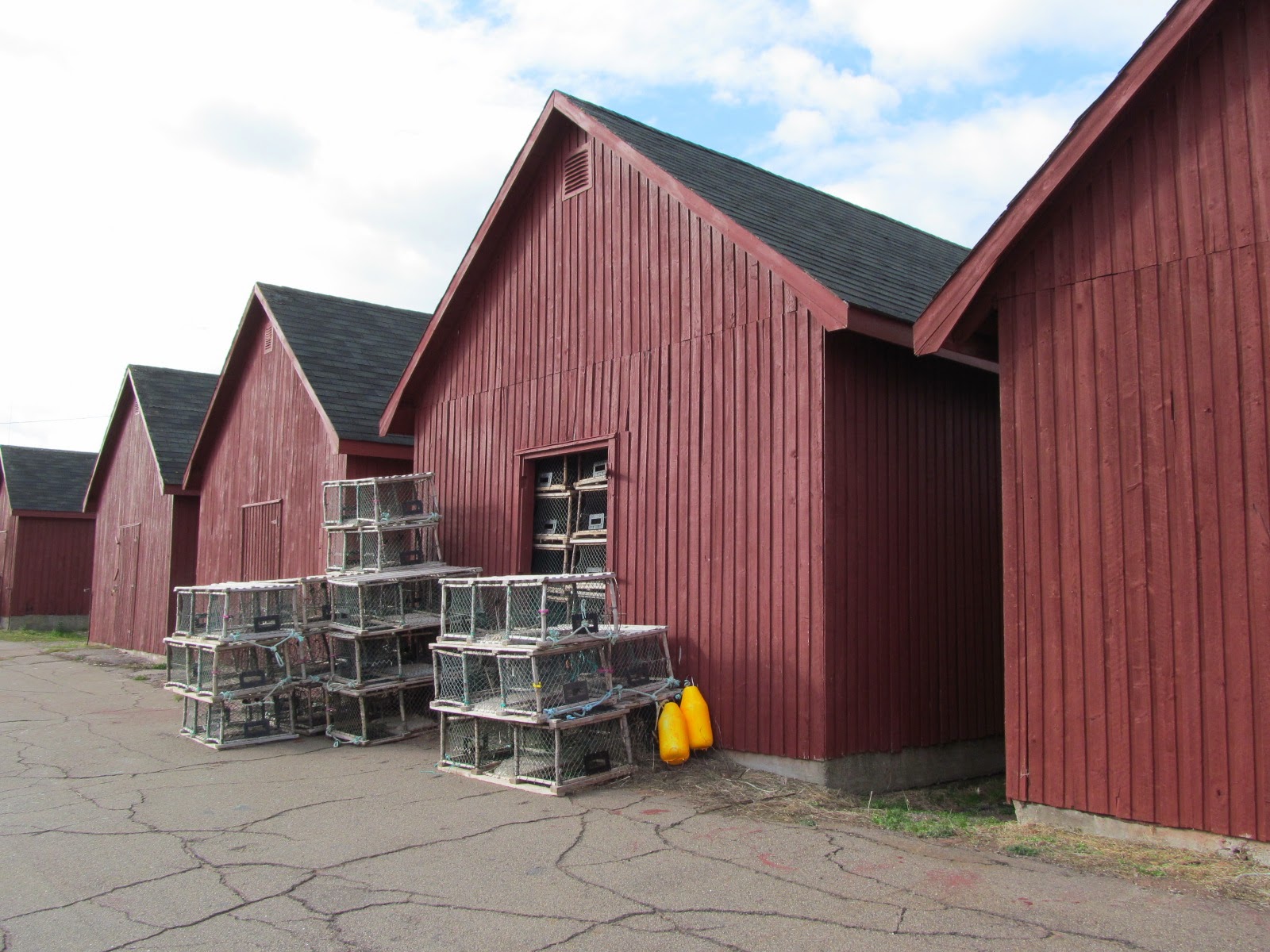There has been much discussion lately about the future of the Belcourt Centre in Rustico - there's been some misinformation circulating about the history of the building. The following comes the Parish history, St. Augustine's Church 1838-1988, Pages 57-59.
Above: The First Convent / Below: the present Convent.
In February 1932 the first Convent on this site was destroyed by fire...
"The Sisters and the
parishioners did not give up. The big house opposite the church, then owned by
Teddy Doucette, was made available as living quarters for the Sisters and some
classrooms, and the remaining classes were accommodated in the Parish Hall. The
boarders were lodged with families in the village. Classes were resumed the
very next day, after books were secured from Charlottetown.
With insurance money for materials,
the parishioners decided they could build a new convent if volunteer labour
were provided. The traditional generosity of the people and their tremendous
loyalty to the convent made it possible to erect a convent that summer, using
the repaired foundation and an almost identical design. Missing were the third
floor dormer windows which had given the original convent an air of style. The
Sisters and pupils moved into the new building in December, 1932. At the time
of the re-building, Sr. St. Joseph du Sauveur, who had done so much for the
former convent, was retired in Montreal. But her love for Rustico prompted her
to help. She had a truck box placed near the entrance to the Motherhouse with a
sign, "Donations for the Convent in Rustico".
Even with the new convent building,
better salaries for the teachers, and many successes in the training of youth,
all was not easy. Declining enrollment in the thirties threatened their
government salaries, and changes in lifestyles made boarding schools less
popular. But another boost for the convent occurred when a Grade Eleven Class
was opened in 1950. This put the Convent School in the category of Senior High
School, and though the classes were small, their success in Maritime Board
Examinations was testimony to the quality of the teaching found in Rustico
Convent. In 1953, the Grade Eleven Class was combined with that of North
Rustico.
The late fifties and early sixties
brought more changes which affected the convent in Rustico. Consolidation of
schools brought bus transportation into the picture, and soon boarding schools
were completely out of date. To provide space for the now larger classes, the
Department of Education in 1963 had a new elementary school built near St.
Augustine's Church, and this move left more vacant space at the convent. The
Sisters continued to live there and teach at the new school, named St.
Augustine's School, but as the number of Sisters on the staff decreased, they
found it more convenient to live at Stella Maris Convent in North Rustico and
commute to school.
For a few years the convent was used
as a summer residence for Sisters of Notre Dame in the Maritime, but this plan
proved too costly, and in 1973, the convent was sold to Jack Pound and Joe Jabbour
under the company name of J and J Estates. For a short time they operated a
motel and Restaurant under the name Belcourt Lodge and Restaurant. Lack of
modern facilities and other handicaps hindered the success of their enterprise.
Meanwhile, the Roman Catholic Diocese of Charlottetown had a committee
searching for a facility for Retreats and other religious programs, and in 1977
it was decided to buy the former St. Augustine's Convent for a Retreat House.
For four years the Retreat House program gradually grew under the direction of
Donald Doucette of Rusticoville, and then in 1981, two Sisters of St. Martha
came to live at the Retreat House and carry out the tasks of administration.
They were: Sister Bernice Cullen and Sister Carmelita Soloman. Later a third
Sister, Sister Frances Murphy, joined the staff. Belcourt Centre has a full
yearly schedule of events fro Spiritual Renewal, and for the parishioners who
had supported the convent so faithfully, it has been great joy "to see the
lights in the convent again".
To reflect adequately on the
contribution made by the Sisters of Notre Dame at the convent from 1882 would
be a monumental task. Here we have space only to highlight a few outstanding
ways in which a lasting impression was effected for people of the parish and
far beyond its limits, and mention a few points of special interest in the
history of the convent.
Formation in the Christian life was
always foremost in the program provided by the Sister, and daily religious
instruction and prayer...
Cultural training was offered
through music, drama and art; and through instruction and example, pupils
acquired a general refinement that has carried down from generation to
generation...
The good religious formation
provided in the school and the example of the Sisters encouraged those who ere
called to the priesthood and the religious life.. For nearly one hundred years, the daughters of
Marguerite Bourgeoys gave to Rustico families and to families far beyond the
parish boundaries a solid formation in the Christian life, first class
instruction in academic subjects, and a cultural education that no report card
can evaluate. Though the convent they knew is no more, the people of Rustico
recognize that the lives of families trained at the convent were transformed by
the Sisters, and their gratitude will not diminish in the years to come. It
seems very fitting that the former convent now serves as a Diocesan Retreat
House under the name Belcourt Center."

































































